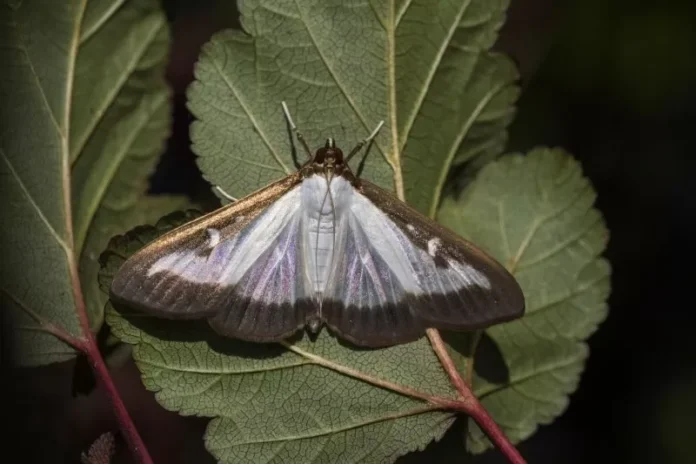The Virginia Department of Agriculture and Consumer Services (VDACS) has recently announced the detection of a new invasive insect in the Commonwealth: the box tree moth. This news has caused concern among farmers, gardeners, and nature enthusiasts as this insect poses a threat to our local ecosystem.
The box tree moth, also known as Cydalima perspectalis, is a small but destructive moth native to East Asia. It was first detected in Europe in 2007 and has since spread to many countries, including the United States. The moth is known for its voracious appetite and ability to quickly defoliate boxwood plants, which are commonly used for hedges, topiaries, and ornamental shrubs.
The detection of this invasive species in Virginia was confirmed by VDACS after receiving reports from concerned citizens and conducting thorough surveys in affected areas. The moth has been found in several localities, including Fairfax, Prince William, and Frederick counties. VDACS has advised residents to be on the lookout for signs of infestation, such as holes in leaves and silken webs on branches.
The introduction of the box tree moth to Virginia is a serious concern for the state’s agriculture and horticulture industries. Boxwood is a popular and valuable plant, with an estimated 17 million plants in the state. It is also an important component of the state’s landscape and contributes to the aesthetic appeal of many homes and public spaces. The potential damage from this invasive insect could be devastating, both economically and environmentally.
In response to this threat, VDACS has taken immediate action to control the spread of the box tree moth. The department has implemented quarantine measures in affected areas, restricting the movement of boxwood plants, leaves, and other materials that could potentially carry the moth. VDACS has also launched an extensive outreach and education campaign to raise awareness among residents and businesses about the importance of early detection and reporting.
The department is working closely with local, state, and federal agencies to develop a comprehensive management plan for the box tree moth. This includes exploring options for biological control, such as the introduction of natural predators or parasites, as well as environmentally friendly methods for controlling the moth’s population.
The detection of the box tree moth in Virginia serves as a reminder of the importance of preventing the introduction of invasive species. These non-native species can have a devastating impact on our local ecosystems, threatening native plants, animals, and habitats. It is crucial for everyone to do their part in preventing the spread of invasive species by following quarantine measures and reporting any sightings to VDACS.
As we work together to address this new challenge, VDACS is committed to keeping the public informed and updated on the latest developments. The department has set up a dedicated webpage with information and resources on the box tree moth, including how to identify and report sightings. Residents are encouraged to visit the website for regular updates and to stay informed about the efforts being made to protect our state’s natural resources.
In conclusion, the detection of the box tree moth in Virginia is a cause for concern, but it also presents an opportunity for us to come together and take action to protect our environment. By working together and following the guidance of VDACS, we can prevent the further spread of this invasive species and preserve the beauty and diversity of our state. Let us all do our part in keeping Virginia’s agriculture and natural resources safe for future generations.

